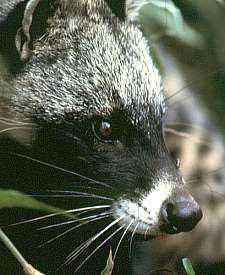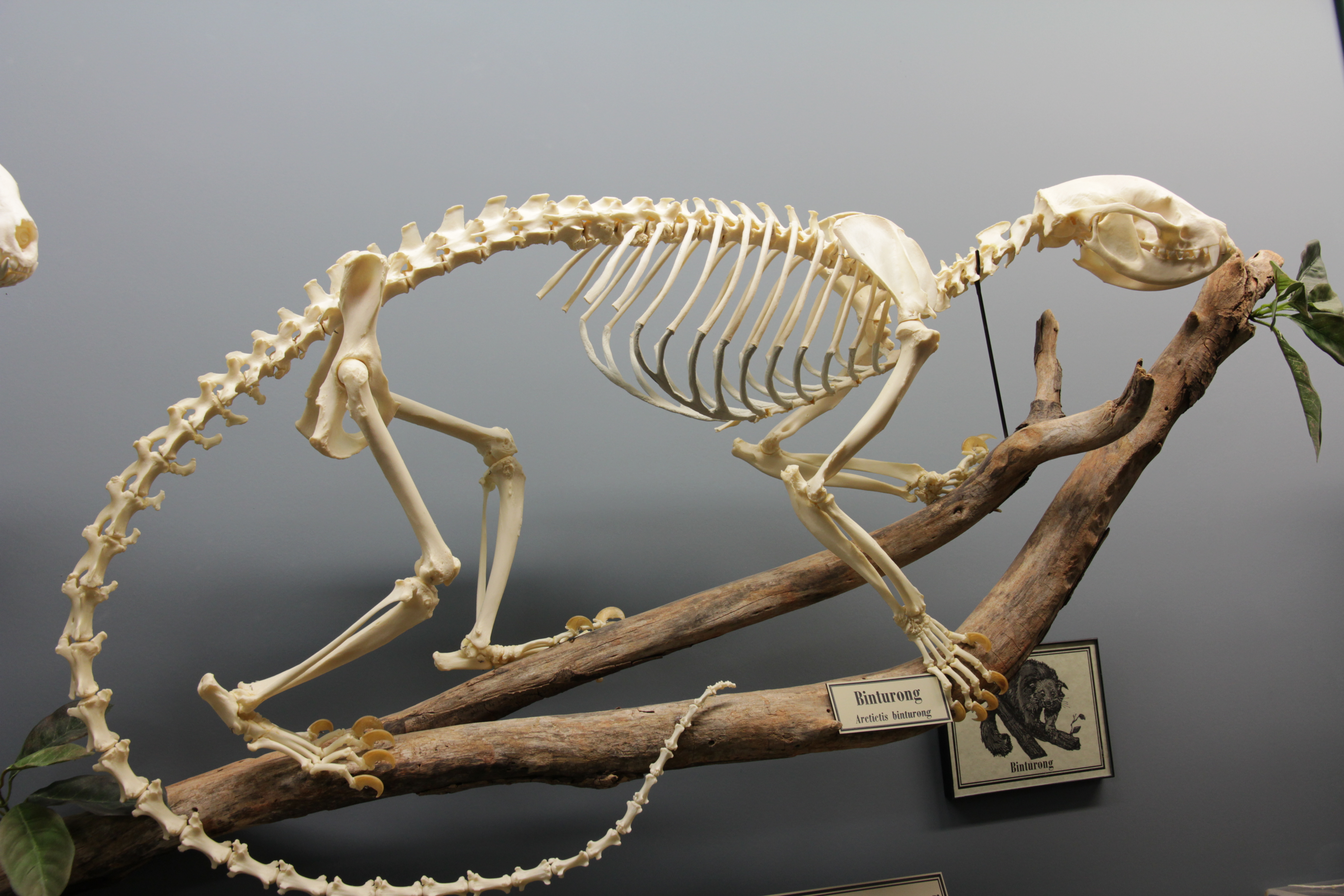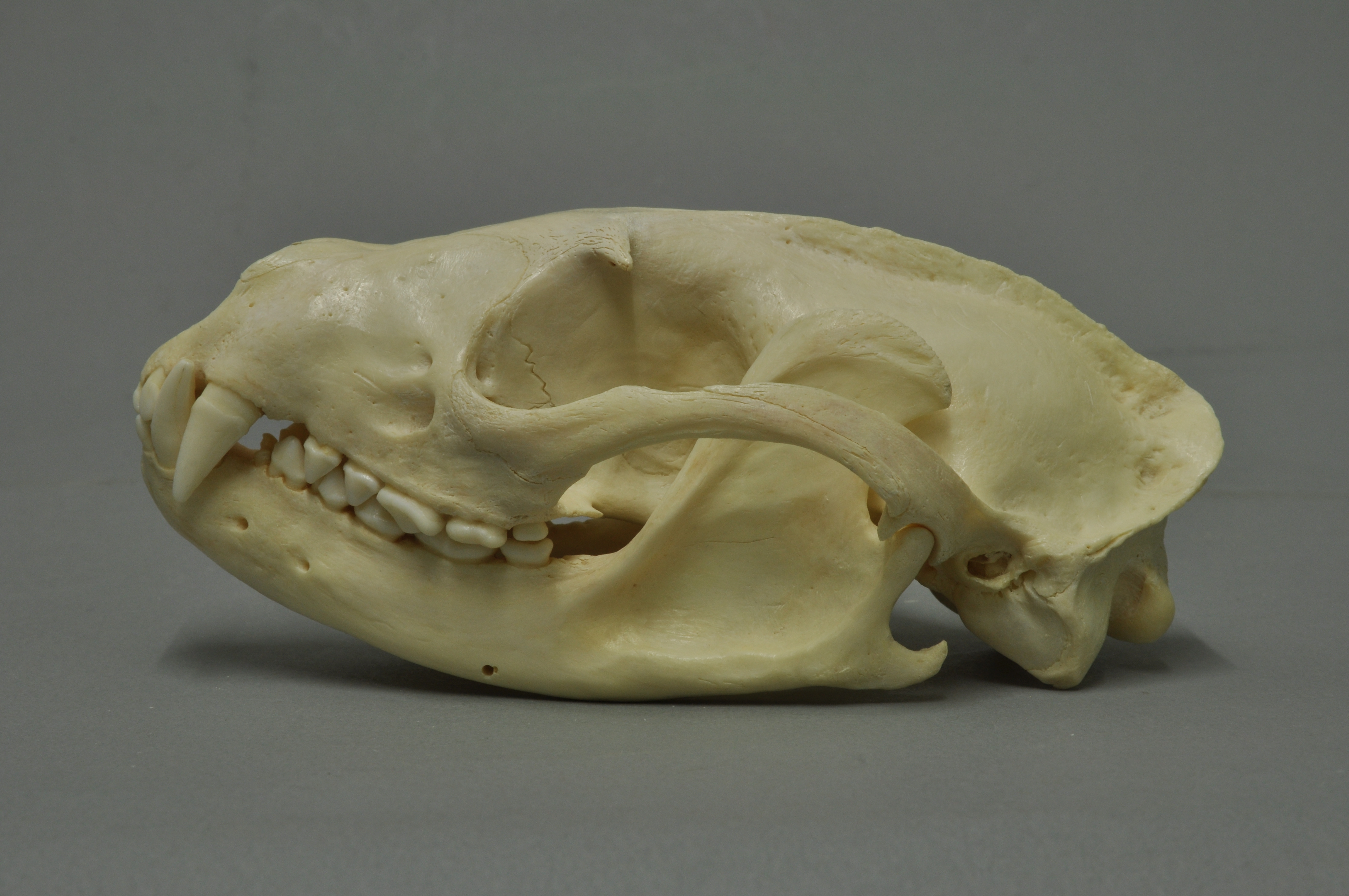|
Civet
A civet () is a small, lean, mostly nocturnal mammal native to tropical Asia and Africa, especially the tropical forests. The term civet applies to over a dozen different species, mostly from the family Viverridae. Most of the species diversity is found in southeast Asia. The best-known species is the African civet, ''Civettictis civetta'', which historically has been the main species from which a musky scent used in perfumery, also referred to as " civet", was obtained. Naming The common name is used for a variety of carnivoran mammal species, mostly of the family Viverridae. The African palm civet (''Nandinia binotata'') is genetically distinct and belongs in its own monotypic family, Nandiniidae. Civets are also called "toddycats" in English, "Mara Patti" in Malayalam, "musang" in Malay and Indonesian, and ''urulǣvā'' () in Sinhalese. There can be confusion among speakers of Malay because the indigenous word "musang" has been mistakenly applied to foxes by printed m ... [...More Info...] [...Related Items...] OR: [Wikipedia] [Google] [Baidu] |
African Civet
The African civet (''Civettictis civetta'') is a large viverrid native to sub-Saharan Africa, where it is considered common and widely distributed in woodlands and secondary forests. It is listed as Least Concern on the IUCN Red List since 2008. In some countries, it is threatened by hunting, and wild-caught individuals are kept for producing civetone for the perfume industry. The African civet is primarily nocturnal and spends the day sleeping in dense vegetation, but wakes up at sunset. It is a solitary mammal with a unique coloration: the black and white blotches covering its coarse pelage and rings on the tail are an effective cryptic pattern. The black bands surrounding its eyes closely resemble those of the raccoon. Other distinguishing features are its disproportionately large hindquarters and its erectile dorsal crest. It is an omnivorous generalist, preying on small vertebrates, invertebrates, eggs, carrion, and vegetable matter. It is one of the few carnivores cap ... [...More Info...] [...Related Items...] OR: [Wikipedia] [Google] [Baidu] |
Asian Palm Civet
The Asian palm civet (''Paradoxurus hermaphroditus''), also called common palm civet, toddy cat and musang, is a viverrid native to South and Southeast Asia. Since 2008, it is IUCN Red Listed as Least Concern as it accommodates to a broad range of habitats. It is widely distributed with large populations that in 2008 were thought unlikely to be declining. In Indonesia, it is threatened by poaching and illegal wildlife trade; buyers use it for the increasing production of kopi luwak. Characteristics The Asian palm civet's long, stocky body is covered with coarse, shaggy hair that is usually greyish in colour. It has a white mask across the forehead, a small white patch under each eye, a white spot on each side of the nostrils, and a narrow dark line between the eyes. The muzzle, ears, lower legs, and distal half of the tail are black, with three rows of black markings on the body. Its head-to-body length is about with a long unringed tail. It weighs . Its anal scent ... [...More Info...] [...Related Items...] OR: [Wikipedia] [Google] [Baidu] |
Viverridae
Viverridae is a family of small to medium-sized, feliform mammals. The viverrids () comprise 33 species placed in 14 genera. This family was named and first described by John Edward Gray in 1821. Viverrids occur all over Africa, southern Europe, and South and Southeast Asia, across the Wallace Line. Their occurrence in Sulawesi and in some of the adjoining islands shows them to be ancient inhabitants of the Old World tropics. Characteristics Viverrids have four or five toes on each foot and half-retractile claws. They have six incisors in each jaw and molars with two tubercular grinders behind in the upper jaw, and one in the lower jaw. The tongue is rough with sharp prickles. A pouch or gland occurs beneath the anus, but there is no cecum. Viverrids are the most primitive of all the families of feliform Carnivora and clearly less specialized than the Felidae. In external characteristics, they are distinguished from the Felidae by the longer muzzle and tuft of facial vibr ... [...More Info...] [...Related Items...] OR: [Wikipedia] [Google] [Baidu] |
Small Indian Civet
The small Indian civet (''Viverricula indica'') is a civet native to South and Southeast Asia. It is listed as Least Concern on the IUCN Red List because of its widespread distribution, widespread habitat use and healthy populations living in agricultural and secondary landscapes of many range states. This is the only species in genus ''Viverricula''. Characteristics The small Indian civet has a rather coarse fur that is brownish grey to pale yellowish brown, with usually several longitudinal black or brown bands on the back and longitudinal rows of spots on the sides. Usually there are five or six distinct bands on the back and four or five rows of spots on each side. Some have indistinct lines and spots, with the dorsal bands wanting. Generally there are two dark stripes from behind the ear to the shoulders, and often a third in front, crossing the throat. Its underfur is brown or grey, often grey on the upper parts of the body and brown on the lower. The grey hairs on the ... [...More Info...] [...Related Items...] OR: [Wikipedia] [Google] [Baidu] |
Paguma
The masked palm civet (''Paguma larvata''), also called the gem-faced civet, is a palm civet species native to the Indian subcontinent and Southeast Asia. It has been listed as least concern on the IUCN Red List since 2008 as it occurs in many protected areas, is tolerant to some degree of habitat modification, and widely distributed with presumed large populations that are unlikely to be declining. The genus ''Paguma'' was first named and described by John Edward Gray in 1831. All described forms are regarded as a single species. In 2003, masked palm civets at a wildlife market in China were found to have been infected with the severe acute respiratory syndrome coronavirus. Characteristics The masked palm civet's fur is grayish to ochraceous, black on the head, shoulders and neck, and blackish brown on the tail and feet. It has a white blaze on the forehead; white marks above and below the eyes extend to the ears, forming a half-collar. In morphology the masked palm civet ... [...More Info...] [...Related Items...] OR: [Wikipedia] [Google] [Baidu] |
Civet (perfumery)
Civet (''Zibeth''; ''Zibet''; ''Zibetum''), also known as civet musk and civet oil, is the glandular secretion produced by both sexes of Viverridae species. Production A number of viverrid species secrete civet oil in their perineal glands, including the African civet (''Civettictis civetta''), large Indian civet (''Viverra zibetha'') and small Indian civet (''Viverricula indica''). Most civet is produced in African farms, where African civets are kept in cages for this purpose. African civets typically produce three to four grams of civet per week. In 2000, civet sold for about five hundred dollars per kilogram. Civet is a soft, almost liquid material. It is pale yellow when fresh, darkening in the light and becoming salve-like in consistency. Its odor is strong, even putrid as a pure substance, but once diluted it is pleasantly and sweetly aromatic. It is prepared for use in perfumery by solvent extraction to yield either a tincture (10 or 20 percent), an absolute, or a ... [...More Info...] [...Related Items...] OR: [Wikipedia] [Google] [Baidu] |
Diplogale
Hose's palm civet (''Diplogale hosei''), also known as Hose's civet, is a viverrid species endemic to the island of Borneo. It is listed on the IUCN Red List as Vulnerable because of an ongoing population decline, estimated to be more than 30% over the last three generations (inferred to be 15 years) and suspected to be more than 30% in the next three generations due to declines in population inferred from habitat destruction and degradation. ''Diplogale'' is a monospecific genus. Hose's palm civet was named after the zoologist Charles Hose by Oldfield Thomas in 1892. Hose collected the first specimen in Sarawak in 1891. What little is known of the species comes primarily from 17 museum specimens worldwide. Only in 1997, the first living specimen was obtained and released after two months. Hose's civet is not kept in captivity anywhere in the world. Characteristics The upperparts (from nose to tail tip, including outer surfaces of the four limbs) are dark brown to blackish ... [...More Info...] [...Related Items...] OR: [Wikipedia] [Google] [Baidu] |
Golden Palm Civet
The golden palm civet (''Paradoxurus zeylonensis'') is a palm civet endemic to Sri Lanka. It is listed as Vulnerable on the IUCN Red List. Its distribution is severely fragmented, and the extent and quality of its habitat in Sri Lanka's hill regions are declining. The golden palm civet was described by Peter Simon Pallas in 1778. Taxonomy ''Viverra zeylonensis'' was the scientific name proposed by Peter Simon Pallas in 1778 for a palm civet specimen from Sri Lanka. Between the 19th and early 21st centuries, several zoological specimens were described, including: *''Paradoxurus aureus'' by Frédéric Cuvier in 1822 *''Paradoxurus montanus'' by Edward Frederick Kelaart in 1852 who described a fulvous brown palm civet from the mountains of Sri Lanka, which he considered a variety of the golden palm civet. *''Paradoxurus stenocephalus'' by Colin Groves and colleagues in 2009 who described a golden brown specimen from Sri Lanka's dry zone. They proposed to regard ''P. montanu ... [...More Info...] [...Related Items...] OR: [Wikipedia] [Google] [Baidu] |
Paradoxurus Montanus
The golden palm civet (''Paradoxurus zeylonensis'') is a palm civet endemism, endemic to Sri Lanka. It is listed as Vulnerable species, Vulnerable on the IUCN Red List. Its distribution is severely fragmented, and the extent and quality of its habitat in Sri Lanka's hill regions are declining. The golden palm civet was described by Peter Simon Pallas in 1778. Taxonomy ''Viverra zeylonensis'' was the scientific name proposed by Peter Simon Pallas in 1778 for a palm civet specimen from Sri Lanka. Between the 19th and early 21st centuries, several zoological specimens were described, including: *''Paradoxurus aureus'' by Frédéric Cuvier in 1822 *''Paradoxurus montanus'' by Edward Frederick Kelaart in 1852 who described a fulvous brown palm civet from the mountains of Sri Lanka, which he considered a variety of the golden palm civet. *''Paradoxurus stenocephalus'' by Colin Groves and colleagues in 2009 who described a golden brown specimen from Sri Lanka's dry zone. They proposed t ... [...More Info...] [...Related Items...] OR: [Wikipedia] [Google] [Baidu] |
African Palm Civet
The African palm civet (''Nandinia binotata''), also known as the two-spotted palm civet, is a small feliform mammal widely distributed in sub-Saharan Africa. It is listed as Least Concern on the IUCN Red List. Characteristics The African palm civet is grey to dark brown with dark spots on the back. It has short legs, small ears, a lean body, and a long ringed tail. It has two sets of scent glands on the lower abdomen and between the third and fourth toes on each foot, which secrete a strong smelling substance used to mark territory and in mating. Adult females reach a body length of with a long tail and weigh . Adult males reach in body length with a long tail and weigh . The African palm civet's ear canal is not divided and cartilaginous at the end. Distribution and habitat The African palm civet ranges throughout much of sub-Saharan Africa from Guinea to South Sudan, south to Angola and into eastern Zimbabwe. It has been recorded in deciduous forests, lowland rainfor ... [...More Info...] [...Related Items...] OR: [Wikipedia] [Google] [Baidu] |
Paradoxurus
''Paradoxurus'' is a genus of three palm civets within the viverrid family that was denominated and first described by Frédéric Cuvier in 1822. The ''Paradoxurus'' species have a broad head, a narrow muzzle with a large rhinarium that is deeply sulcate in the middle. Their large ears are rounded at the tip. The tail is nearly as long as the head and body. The three species are the Asian palm civet, the Golden palm civet, and the Brown palm civet. Characteristics ''Paradoxurus'' species have a broad head, a narrow muzzle with a large rhinarium that is deeply sulcate in the middle. Their large ears are rounded at the tip, the interior ridges and bursae are well developed. The skull exhibits marked muscular moulding, and the postorbital area is deeply constricted shortly behind the well-developed postorbital processes. It is considerably narrower than the interorbital area and than the muzzle above the canines. The dental formula is . The palate is not produced behind to cove ... [...More Info...] [...Related Items...] OR: [Wikipedia] [Google] [Baidu] |
Macrogalidia
The Sulawesi palm civet (''Macrogalidia musschenbroekii''), also known as Sulawesi civet, musang and brown palm civet is a little-known palm civet endemic to Sulawesi. It is listed as Vulnerable on the IUCN Red List due to population decline estimated to have been more than 30% over the last three generations (suspected to be 15 years) inferred from habitat destruction and degradation. ''Macrogalidia'' is a monospecific genus. It is the only carnivoran native to Sulawesi. Characteristics The Sulawesi civet has a light brownish-chestnut coloured soft and short coat with numerous light hairs intermixed. The underparts vary from fulvous to white; the breast is rufescent. There is a pair of indistinct longitudinal stripes and some faint spots on the hinder part of the back. The whiskers are mixed brown and white. The tail is marked with alternating rings of dark and pale brown, which are indistinct on the under surface, and disappear towards the dark tip. The length of head and bo ... [...More Info...] [...Related Items...] OR: [Wikipedia] [Google] [Baidu] |







.jpg)